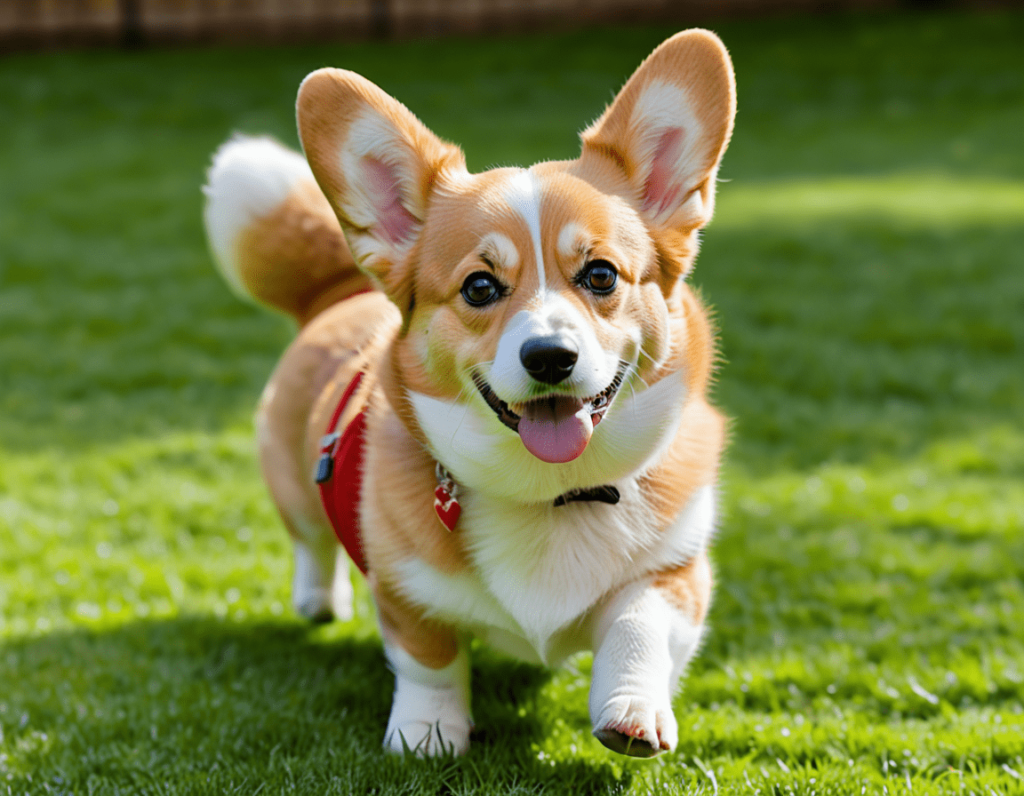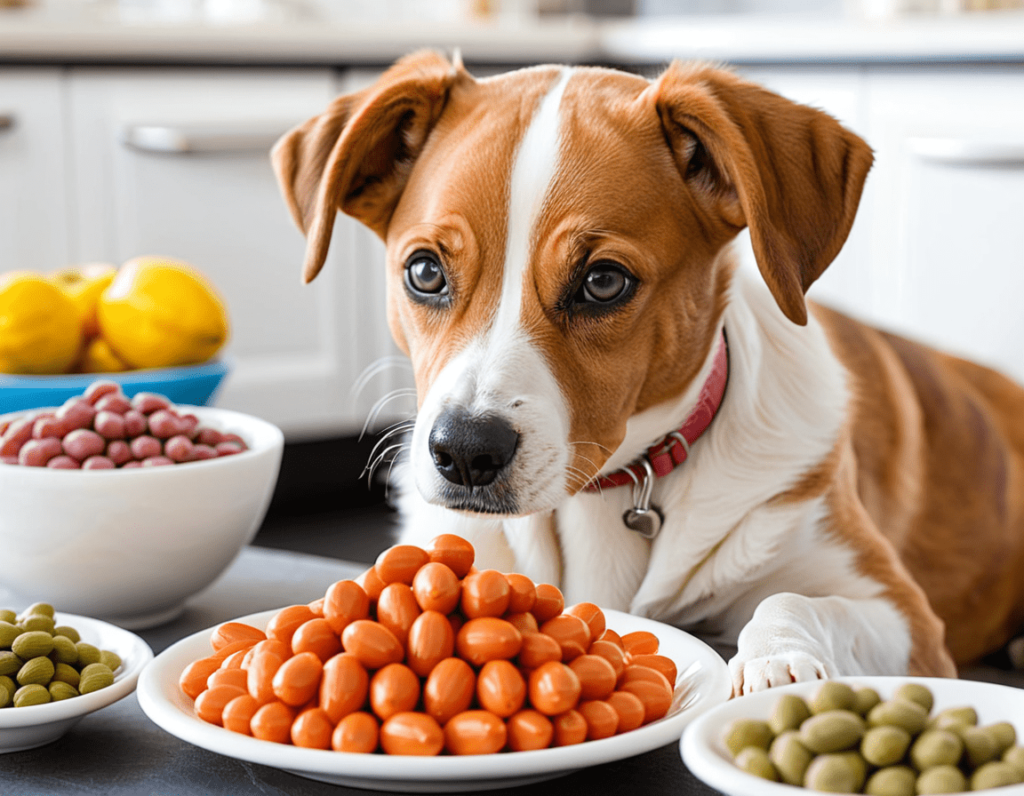
Bringing a new dog into your home is like welcoming a furry tornado of joy, love, and just a sprinkle of chaos. Whether you’re adopting a tiny pup or a seasoned canine, there are some essential supplies you’ll need to ensure your new best friend feels right at home. Let’s dive into the must-have dog supplies for new owners that will keep tails wagging and your sanity intact!
1. Food and Water Bowls
Every dog needs a proper dining setup. Invest in sturdy, easy-to-clean food and water bowls. If your dog is anything like mine, you might also want to consider getting a splash zone cover because they will find a way to turn mealtime into a water park adventure. Remember, a well-fed pup is a happy pup (and a happy owner!).
2. High-Quality Dog Food
Just like us, dogs need a balanced diet. Consult your vet to find the best food for your pup’s age, size, and dietary needs. And remember, no matter how much those puppy-dog eyes beg, that plate of spaghetti is not suitable for sharing. Your dog doesn’t need to know what Italian food tastes like—trust me!
3. Collar and Leash
You’ll need a sturdy collar and leash for walks and outings. Make sure the collar fits well—tight enough that it won’t slip off but loose enough that it doesn’t cut off circulation (because that would be a bit dramatic, right?). If you’re feeling fancy, consider a personalised collar with your dog’s name. After all, they need to look good while strutting their stuff!
4. Dog Bed
Every pup deserves a cosy spot to crash after a long day of barking at squirrels. Choose a comfortable dog bed that fits your dog’s size and personality. A bed with a removable cover is a bonus because, let’s be honest, your dog is going to think it’s their job to roll in every mud puddle they can find.
5. Crate or Carrier
Whether you’re crate training or just need a safe place for your pup to chill, a crate or carrier is essential. Look for one that’s well-ventilated and secure. It’s a great tool for house training and giving your dog a sense of security. Plus, it doubles as a “time-out” space when they’ve decided that stealing your socks is a great idea.
6. Toys, Toys, Toys!
Dogs love to play, so stock up on toys to keep them entertained. From squeaky toys to tug ropes, variety is key! Just remember: if you buy a plush toy, it’s a gamble on how long it’ll survive your dog’s enthusiastic playtime. Think of it as a doggy version of “The Hunger Games”—may the odds be ever in your favor!
7. Grooming Supplies
No one likes a stinky dog, including your new furry friend! Grab some grooming supplies, including brushes, nail clippers, and dog shampoo. Regular grooming helps keep their coat shiny and can minimise shedding—so your vacuum can take a break once in a while. (Your vacuum will thank you!)

8. Waste Bags
You’ll need waste bags for those unavoidable potty breaks. Look for eco-friendly options if you want to do your part for Mother Earth. Remember, being a responsible dog owner means picking up after them, even if it’s a little less glamorous than it sounds. Your neighbours will appreciate it, and your pup will love you for it!
9. Training Supplies
If you’re starting from scratch, consider getting some training supplies. Treats, clickers, and a good training book can go a long way in helping your pup learn basic commands. Just remember to reward good behavior—like when they sit instead of doing that happy dog dance on your new rug!
10. Veterinary Care
Lastly, but certainly not least, don’t forget about your dog’s health care. Schedule a vet visit soon after bringing them home for vaccinations, check-ups, and advice on preventative care. Plus, your vet can help you set up a vaccination schedule to keep your pup in tip-top shape.
11. Consider a Pet Insurance Plan
Just like humans, dogs can face unexpected health issues. Investing in pet insurance can save you from hefty vet bills and give you peace of mind. Make sure to compare different plans to find one that fits your needs and budget. Think of it as a safety net for your pup’s unexpected “oopsies”!
12. Prepare Your Home
Before your furry friend arrives, make sure your home is dog-proofed. This means securing loose cables, putting away harmful substances, and removing anything that looks like it could be chewed or swallowed. If you’re not sure if something is safe, just ask yourself: “Would my dog find this delicious?” If the answer is yes, it’s best to hide it!
13. Establish a Routine
Dogs thrive on routine, so try to establish a consistent schedule for feeding, walking, and playtime. This helps them feel secure and reduces anxiety. Plus, it makes it easier for you to remember whether you’ve already fed them or if they’re just giving you the puppy-dog eyes for extra treats!
14. Socialize Your Dog
Socialisation is key for a well-adjusted dog. Introduce your pup to different people, pets, and environments. Dog parks, pet-friendly cafes, and puppy classes are great places for your dog to meet new friends. Just remember, not every dog wants to be BFFs immediately—some may prefer to take it slow. Respect their boundaries, and they’ll thank you for it!
15. Stay Informed and Educated
Being a dog owner means staying informed about your pet’s health, behavior, and training needs. Read books, watch videos, and attend training classes to keep your skills sharp. There’s always something new to learn—especially when it comes to understanding your dog’s quirky personality!
16. Enjoy the Journey!
Finally, remember to enjoy the journey. Dog ownership is filled with ups and downs, but the love and companionship you’ll receive from your furry friend make it all worthwhile. Embrace the goofy moments, the cuddles, and the joy they bring to your life. After all, life is better with a dog by your side, even if it means sharing your snacks!
Final Thoughts
Congratulations on your decision to become a dog owner! By gathering these essential supplies and following the tips above, you’re setting the stage for a wonderful experience filled with love, laughter, and plenty of wagging tails. As you embark on this journey together, remember to embrace each moment—whether it’s a muddy paw print on your favorite carpet or a slobbery kiss that catches you off guard. Your new furry friend is sure to fill your life with joy and unforgettable

Essential Dog Supplies for New Owners: FAQs
Answer: As a new dog owner, you likely have plenty of questions about what supplies you need to keep your furry friend happy and healthy. Here are some frequently asked questions (FAQs) to help guide you in your quest for dog ownership success!
1. What are the must-have supplies for a new dog?
Answer: The essential supplies include food and water bowls, high-quality dog food, a collar and leash, a dog bed, a crate or carrier, toys, grooming supplies, waste bags, and training materials. These items will help create a comfortable and safe environment for your new pet.
2. How do I choose the right food for my dog?
Answer: Selecting the right dog food depends on several factors, including your dog’s age, size, breed, and any specific health needs. Consult your veterinarian for recommendations based on your dog’s requirements, and look for high-quality brands with good ingredients. Remember, just because your dog begs for pizza doesn’t mean it’s a good idea!
3. How often should I feed my dog?
Answer: Most adult dogs should be fed twice a day, while puppies may need to eat three to four times a day due to their higher energy levels. Establishing a consistent feeding schedule helps regulate digestion and can reduce mess around the house.
4. What type of collar and leash should I buy?
Answer: Choose a collar that fits comfortably—snug but not too tight (you should be able to fit two fingers between the collar and your dog’s neck). For leashes, a standard 6-foot leash is perfect for walks, while a retractable leash can offer more freedom in open areas. Just remember to keep a good grip, or you might find yourself unexpectedly chasing after your pup!
5. Do I need a crate for my dog?
Answer: A crate can be beneficial for training and providing a safe space for your dog. It can help with housebreaking and gives your dog a cosy spot to relax. Just remember to introduce the crate gradually and make it a positive experience—no one wants their dog to see it as a prison cell!
6. How often should I groom my dog?
Answer: Grooming frequency depends on your dog’s breed and coat type. Some dogs need regular brushing and baths, while others may require only occasional grooming. Check your dog’s specific needs and establish a grooming routine that works for both of you. If your dog starts looking like a fluffy mop, it’s definitely time for a trim!
7. What types of toys are best for my dog?
Answer: Look for a variety of toys to keep your dog entertained. Squeaky toys, chew toys, and interactive toys can all be great options. Just be mindful of your dog’s chewing habits—if they tend to destroy toys in seconds, consider more durable options. And always supervise playtime to avoid any choking hazards!
8. What should I do with my dog’s waste?
Answer: Always clean up after your dog to keep your neighbourhood and parks clean. Invest in eco-friendly waste bags for easy cleanup. Plus, it’s just good manners—nobody wants to step in a surprise pile when they’re out for a stroll!
9. How can I train my dog effectively?
Answer: Positive reinforcement is key to effective dog training. Use treats, praise, and playtime as rewards for good behavior. Start with basic commands like “sit,” “stay,” and “come.” If you’re unsure where to start, consider enrolling in a local training class to help guide you and your pup.
10. When should I take my dog to the vet?
Answer: Schedule a vet visit soon after bringing your dog home to establish a vaccination schedule and get a general health check. Regular check-ups are essential for keeping your dog healthy. If you notice any concerning behavior or health issues, don’t hesitate to contact your vet.
Conclusion
As a new dog owner, being well-prepared with essential supplies and knowledge will help ensure a smooth transition for you and your furry friend. By following these FAQs and investing in the right items, you’re setting the stage for a loving and fulfilling relationship with your new pup. Now, go forth and embrace the joy of dog ownership! 🐾❤️


